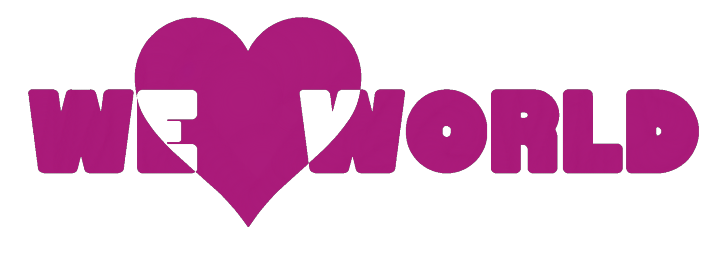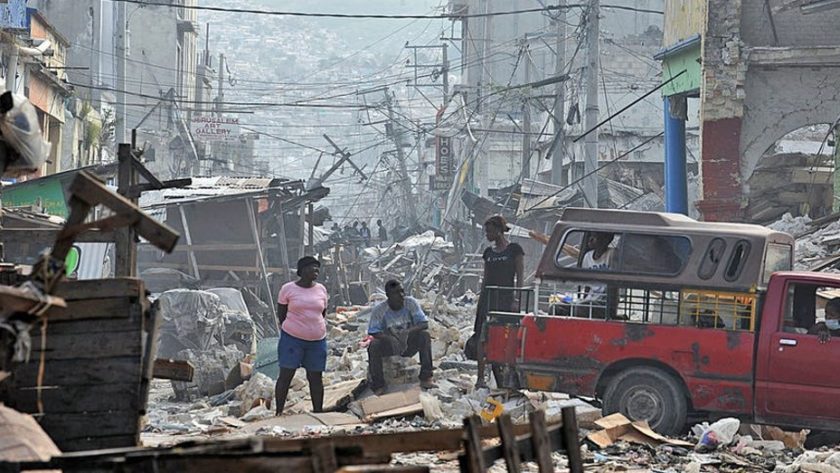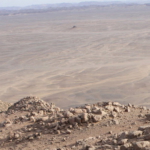When thinking of the Caribbean island nations and their tropical delights, we often forget just how vulnerable Haiti is to natural disasters.
Located right in the path of many of the hurricanes that come across the Atlantic Ocean, this country has been ravaged by disasters many times over. Add the fact that Haiti experiences regular earthquakes, and you’ve got to wonder why it is this nation is such a target for natural occurrences that should be warnings to tell people to live somewhere else and forget about this island country.
Disasters Regularly Kill Many Haitians
When Hurricane Matthew made its way across Haiti, it left three feet of rainwater on the island nation and battered the poor people with winds that reached 145 mph. This is, unfortunately, the norm for this country during hurricane season. During a recent year, four storms, Fay Gustav, Hannah, and Ike, all hit this country and left more than 800 people dead and the nation devastated from the constant need to rebuild. These four storms took out nearly three-quarters of the agricultural land of Haiti as well, making it nearly impossible for the people of this nation to continue to live.
Flooding has become a regular occurrence in Haiti. The country was flooded by hurricanes in 2002, 2003, 2006, and 2007. In 1963, Hurricane Flora killed 6,000 people in Haiti and nearby Cuba, making the rest of the world wonder why Haitians continue to live in their country.
Toss in the fact that earthquakes are a regular part of life in Haiti, and you’ve got natural disasters that are simply too much for one country to deal with. Parts of the capital city of Port-au-Prince were flattened during a 2010 earthquake. This natural disaster killed at least 90,000 people and displaced more than 1.5 million more. This earthquake has been described as setting the country back fifty years, which is just unimaginable.
Where is the Vulnerability Factor?
It’s never been a secret that hurricanes and earthquakes are part of the lifestyle of living in the Caribbean region of the world. Records go back centuries to tell us of these devastating events that can take place in Haiti and other island nations. With that in mind, why is it that this country continues to be so vulnerable to these natural disasters?
We see storms and earthquakes ravage the coastal areas of the United States, but the devastation never seems to be as bad as it is in Haiti. The only exceptions that come to mind happened in New Orleans and Houston when storms dumped rainwater that flooded the regions. Even so, several years later, these cities are rebuilt and appear to be ready if another storm were to arrive to flood the areas again. Why then is Haiti so vulnerable?
The vulnerability factor of Haiti has everything to do with money and preparations. Haiti is the poorest country in the western hemisphere, which leaves it vulnerable to any disruptions, including natural disasters. This country has suffered from decades of political instability, corruption, and violence, which holds it back from ever being able to move forward.
Everything is Lacking in Haiti
Even though huge amounts of aid money have been promised to the country, corruption often keeps that money from making it to the places where it’s needed most. The people of Haiti are exposed to environmental threats because of the staggering levels of deforestation in the country, the lifestyle of the people with many living in shantytowns, and exposed hillsides that can lead to mudslides and earthquakes. The people of Haiti are not in a position to change their luck.
This Country Needs Preparation and Infrastructure
It’simpossible to remove the geographical aspect of why Haiti is vulnerable to natural disasters, but it’s not impossible to make preparations and build an infrastructure to lessen the impacts of hurricanes and earthquakes. It’s going to take time and money to get the job done, but this country needs the support of the nations around the world that have the ability to supply and aid this country with becoming a place where people don’t have to lose everything whenever a storm arrives.
What needs to happen now? Right now, this country needs the very basics of what an infrastructure can provide. The people of the towns and cities in Haiti need to have better sanitation, healthcare centers, and evacuation shelters that give them a place to go when the storms arrive. Unfortunately, these things are only going to be as strong as the government of the country, which is currently extremely weak, making it hard to build and move forward from the latest rampage of disasters that have hit this island nation.
Recreating the Environment of Haiti
Along with the need to build centers and the right infrastructure, this country needs to be rejuvenated from an environmental approach. Haiti has suffered vast deforestation, which should be turned around by planting trees, rebuilding the forest areas, and creating an environment that can help this nation avoid flooding and mudslides in the future.
Not only do Haitians need their forests rebuilt to strengthen the soil and create sheltered areas that naturally lessen the impact of storms, but their farmlands also need to be irrigated in a way that minor flooding and winds aren’t going to devastate the entire agricultural community of this nation. This is a huge undertaking and something that might need some serious ingenuity to accomplish.
One Final Problem for Haiti
The vicious cycle in Haiti of natural disasters hasn’t caused many Haitians to leave their homeland in search of brighter futures elsewhere. This is mostly due to being a poor country and one that has one of the highest population densities in the western hemisphere. More people to take care of doesn’t equate to an easy solution when aid is sent to this nation. This island nation is ravaged every year by various storms and a need to rebuild and recreate time and time again.
Will Enough Aid Make a Difference
One of the greatest challenges to outside countries and organizations is the fact that helping the people of Haiti will always feel like you’re taking three steps forward and one back. Evacuation centers could be built to give people a place to wait out a storm, but that doesn’t stop the shanty homes from being devastated. New trees could be planted, only to be uprooted by the first storm to come through because they haven’t had enough time to take hold of the ground.
Haiti needs the help of other nations, but those countries need to understand the commitment it will take to help this island nation.
This post may contain affiliate links. Meaning a commission is given should you decide to make a purchase through these links, at no cost to you. All products shown are researched and tested to give an accurate review for you.




